Potions: A Curious Tale is debuting on March 7 on Steam after nearly 10 years of development work by indie game developer Renee Gittins and her team at Stumbling Cat.
It’s a passion project if there ever was one, as Gittins had plenty of other work during that time. She is the former executive director of the International Game Developers Association and former general manager of Phoenix Labs, maker of Fae Farm.
I met Gittins back in 2016 at the Dice Summit, the elite game industry conference where she was a Dice scholar. She told me about the game and said she was working on it with five other people at her studio. Over time, more than 19 people contributed to the project, including her significant other Zak Whaley.
The title is a 2D adventure and crafting game where wit is your greatest weapon and combat is not always the answer. You play as Luna, a young witch who overcomes obstacles with the potions she brews, as she gathers items from enchanted lands and conquers devious puzzles on her quest.
GB Event
GamesBeat Summit Call for Speakers
We’re thrilled to open our call for speakers to our flagship event, GamesBeat Summit 2024 hosted in Los Angeles, where we will explore the theme of “Resilience and Adaption”.
Since the game was part of the Steam Next Fest, I played a demo of Potions. It is a charming and nostalgic tale where you have to learn a lot about potions and pursue quests. You explore a fairy tale world and you don’t have to spend all of your time slaughtering people and animals in it.

Gittins had a demo ready in September and she got a lot of feedback. The title is launching on March 7, a day before International Women’s Day. She’s been promoting Potions and one of her videos on TikTok went viral, capturing more than a million plays. Sadly, her Stumbling Cat was named after her real-life cat, who finally died from cancer recently as Gittins was in the final stages of the launch.
“It’s been very hard to balance taking care of his health and my health in the game at the same time. It’s all particularly dark,” she said.
On the lighter side, Gittins said she was pleased to see a strong reaction to the inclusion of folklore from around the world in the game.
Getting started
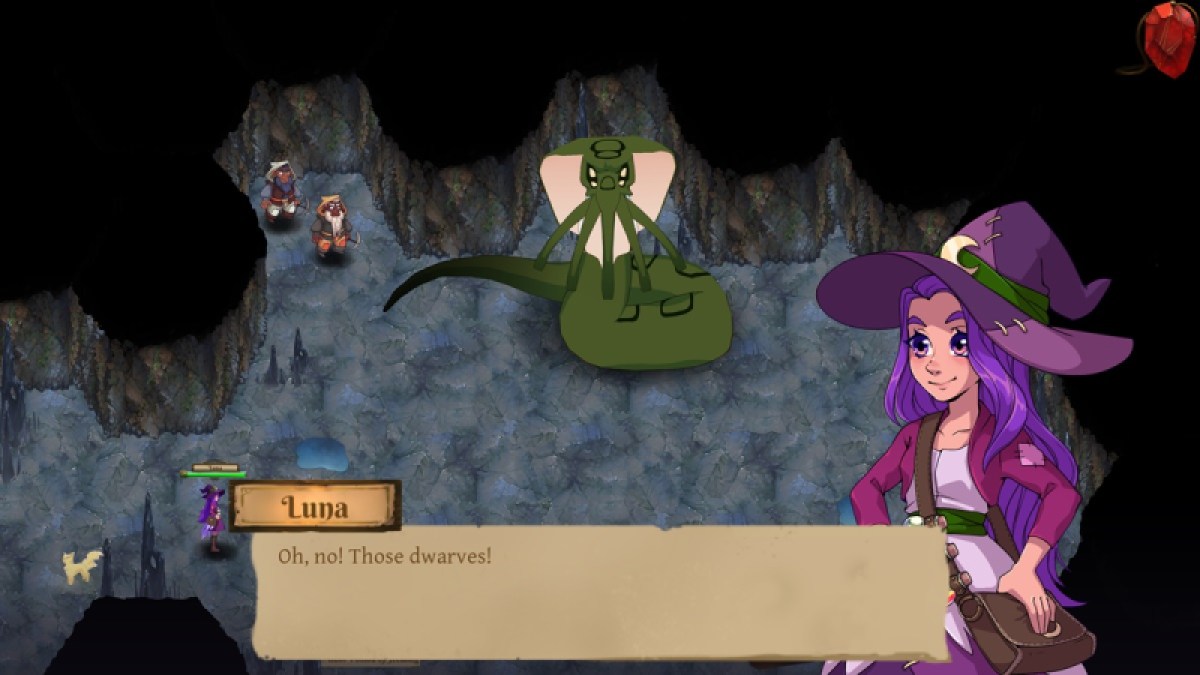
In 2014, Gittins formed her own indie game studio, Stumbling Cat, where she served as creative director with a team of six. Since women made up only about 22% of the game industry at the time, Gittins was something of a unicorn as the head of a studio.
She grew up on games like Wolfenstein, Doom, Duke Nukem 3D and Pokémon.
“What’s interesting about my entry into the industry is that I wasn’t aware that it could be a possibility for me until it was right under my nose,” Gittins told me back in 2016. “It wasn’t until I was finding all of my friends were in the game industry that I realized there was a path for me. It doesn’t really make sense in retrospect, because I was always a passionate gamer growing up. I was a good student – valedictorian in high school, really good at math — and yet nobody mentioned programming to me. Nobody mentioned game development, despite the fact that I spent so much time enjoying games.”
Inspirations
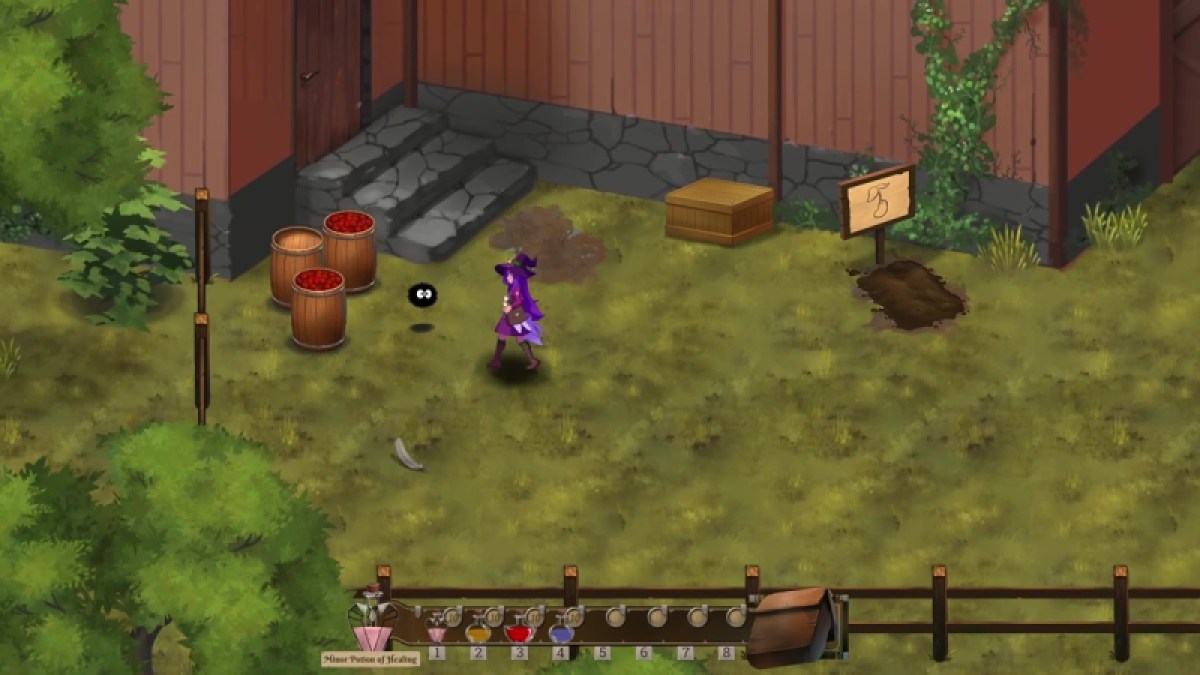
Before she started the game, Gittins made some technical games in the biotech industry. They were reaction or pattern-matching games aimed at helping to judge people’s cognitive abilities.
“This was my first more significant game. And I actually started it with only with plans for it being a portfolio piece. It’s not something I planned to bring to ship,” she said. “But there was so much interest around it that I invested more and more time until I ran that Kickstarter campaign [in 2016]. And then I locked myself into it since then.”
Since she didn’t have any true time pressure for shipping it, Gittins stuck to her actual vision for the game, she said.
“My inspiration for developing potions as a design was actually a frustration with games where arriving at things early or progressing too quickly could be disadvantageous in games that were based on experience points,” Gittins said. “So I wanted to create an adventure game that rewarded you for figuring things out early, and for getting ahead of things. And that’s where I came up with the idea.”
While developing that idea, she realize that a lot of games “reward you for every fluffy bunny you kill, which doesn’t feel very heroic.”
She added, “So I wanted to figure out a way to make the player feel more in balance with their aggression. So there’s definitely still combat in the game, but it costs resources and you can see as players are encountering monsters, they’re making the calculation.”
That makes you think about whether you should engage with the enemy or run away. Do you have the ingredients to attack with a potion, or should you ignore it? It is aimed at encouraging creative problem solving and makes you think about using the environment in your favor.
Potions came easy as an idea as Gittins was part of the Harry Potter generation. But potions just seemed like a magical way to take resources and make them into something fun.
A long haul
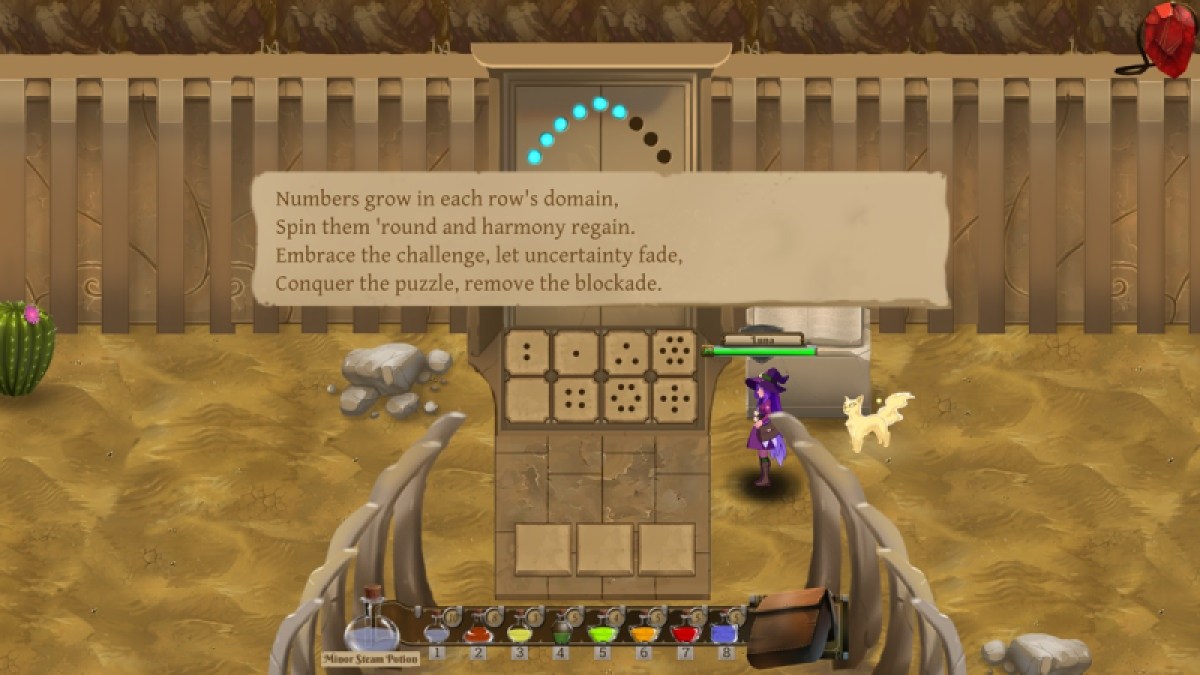
While the Kickstarter was successful, it barely earned enough to hire contractors for the game. And Gittins had to pay rent.
During the project, Gittins focused on game design, engineering, writing and leadership. Other core contributors included Jake Neal (environment and UI art), Zak Whaley (engineering), Atlas Lin (character art and animation), Major Burno (SFX and composition), Kristen Scherer (game design), Gregor Smith (game design), Wesley Eldridge (character art and animation), Joshua Du Chene (SFX and composition), and Roma Jensen (character art and animation).
The only other full-timer was Lin, who contributed the most character art and animations. Gittins took a short break from the game after he graphic designer passed away. She needed time for a mental recovery that lasted a couple of months.
“And his passing also helped inspired me to continue to work on the game,” she said.
It has painterly backgrounds and cel-shaded foregrounds. The art style reminds her of Studio Ghibli.
“I wanted the world to feel immersive, but the characters to still be able to be easily recognized and personified. So I think that’s why I went with the painterly backgrounds and those associated characters because it allows them to be more expressive more easily, particularly when they’re small on your screen,” Gittins said.
The finish line
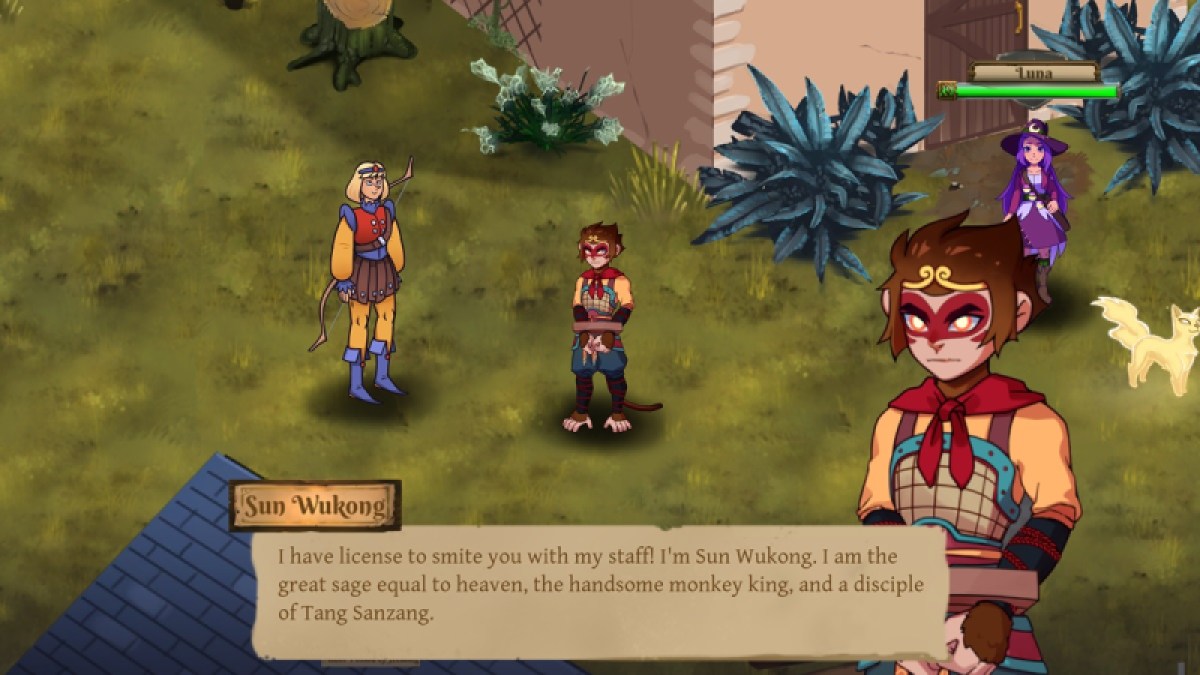
She said she had been close to the daylight of finishing the game for a while. But in the past year, after leaving Phoenix Labs, she buckled down and worked on the game full time.
“I have felt reinvigorated by returning to indie development by getting into the code, something that I missed greatly,” Gittins said. “It’s really this last year that has made leaps and bounds of progress. All of the base systems were set up prior to that, but a lot of the second half of the game in terms of content development has really happened over the last year or so.”
You can make more than 100 potions in the game. And the game has more than 18,000 lines of text, meaning its story is deep. The game has 15 chapters with a lot of puzzles and side quests. The game takes maybe 10 to 15 hours to play, though some beta testers spend far more time exploring it.
Wisdom
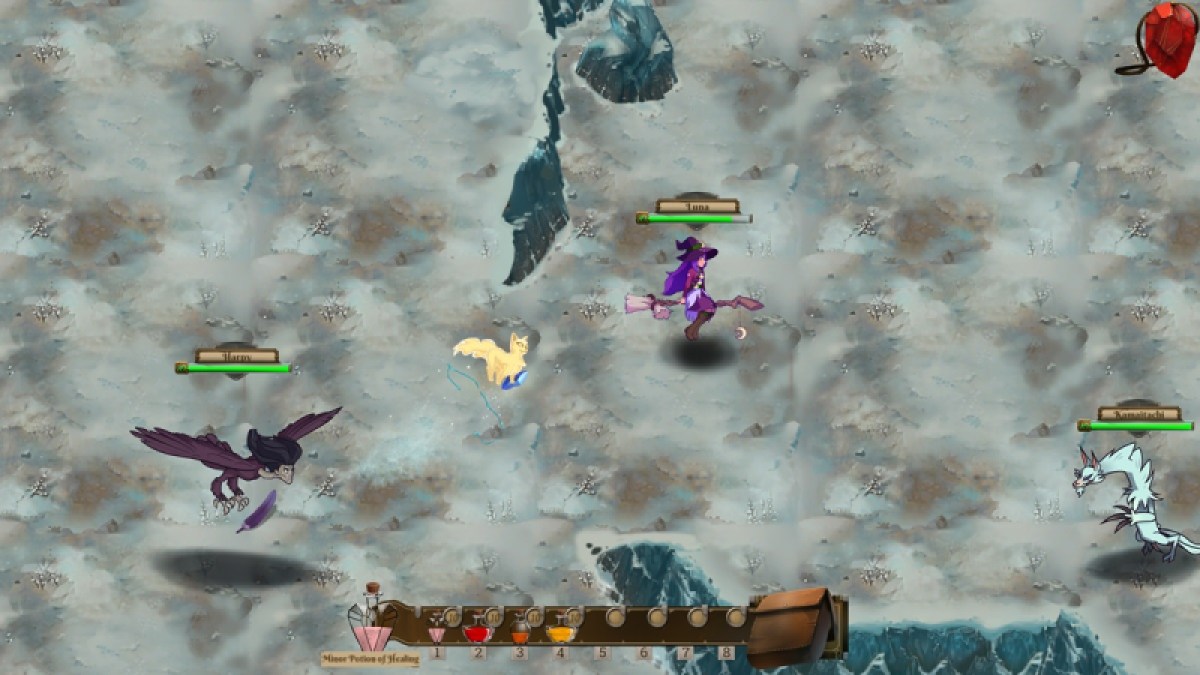
In hindsight, Gittins acknowledges she might have finished sooner if she had made a smaller game.
“Like I said, I wasn’t intending to ever publish this. But I felt so in love with the concept and I’m horrendously stubborn,” she said. “I stuck it out to see it through the end. It’s not always been easy. Certainly, after working on something for almost a decade, it’s hard to always feel inspired and creative. So when you’re creating that content, working through things, having the encouragement of my friends and other developers and of the Kickstarter backers or play testers has been very helpful.”
Gittins spoke with some game publishers but since it was a passion project, it didn’t make sense to go with a publisher who might have demanded precise milestones and profit sharing. She has a partner for the greater China region. The game will be in 10 languages, including English, traditional Chinese, simplified Chinese, Japanese, Korean, French, German, Brazilian Portuguese, and Russian, and Spanish.
The total budget is under $100,000 “because my time is worth zero,” Gittins said.
Gittins said she had to learn a lot about the entire game development process in making the game, from learning enemy AI tech to system design architecture and communication between those systems.
“As as I grew my career, I also gained the ability to better develop this title and so both the title and my skills grew together,” she said. “The support of the game development community has been great. A large part of my career has been both receiving support from and providing support to other game developers. So certainly, this project wouldn’t be successful without that wonderful network that I have.”
VentureBeat’s mission is to be a digital town square for technical decision-makers to gain knowledge about transformative enterprise technology and transact. Discover our Briefings.

